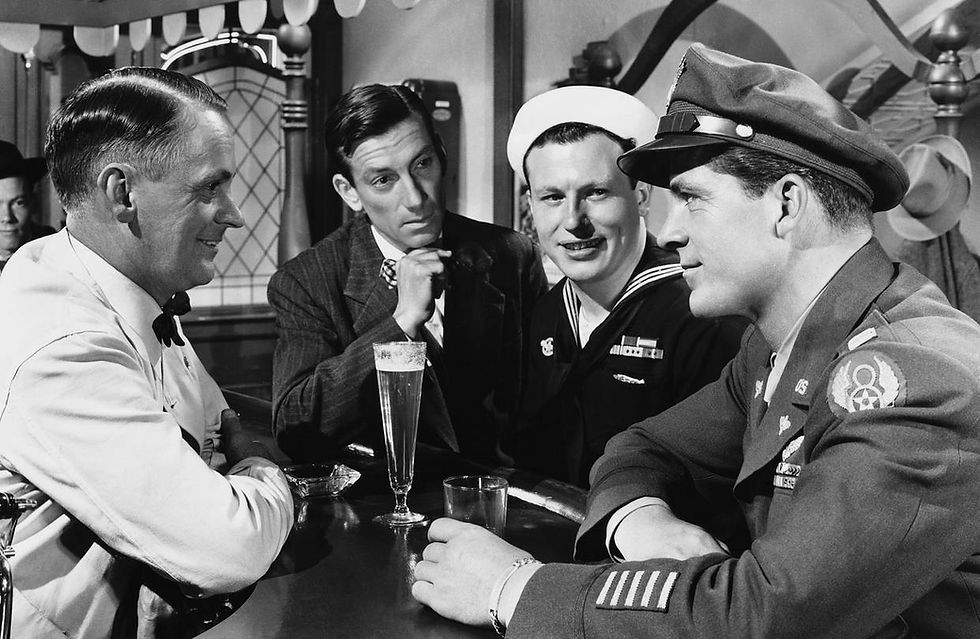The Sensational Sound of Silence
- Joseph Pryweller
- Dec 3, 2019
- 3 min read
Updated: Dec 16, 2019

I recently watched an obscure 1950s Western called Time to Die. Made in Mexico and directed by Arturo Ripstein, a controversial filmmaker known for building terror subtly through the itchy trigger finger of his camera darting in, out and around the frame.
What was noticeable in the movie was the lack of a background soundtrack. No score, no iconic theme, no low-level sound helping viewers understand the emotions of the scene -- whether happy, tragic, somber, comic or something in between. There was nothing but flickering images on the screen to let us decide how to think and feel.
In the case, Ripstein's first film in a long career that is still going strong, it may have been a matter of budgetary constraints. But the quietude works wonders. This unconventional work -- co-written by future Nobel laureate Gabriel Garcia Marquez -- concerns an aging ex-convict who comes back to claim his home after being locked up for 18 years. He is no cutout Western hero -- his waist is saggy, his beard is as patchy as desert moss, he sweats through his clothes, he has no home or wife.
Meanwhile, the sons of the man he killed are on his tail wanting revenge, even though it was determined that the dead man goaded the hero into this violent act. The hero is a victim of circumstance, bu he now waits his time until he has to come face-to-face with the sons who want nothing more than to shoot their father's murderer.
There are scenes where sound is at a minimum, as the audience waits for the inevitable climax along with the protagonist. In one scene, the eldest son paces his family home, with the squeak of his boots and an echoing floor giving off an aura of menace. The hero's quiet crusade for redemption is highlighted by scenes of him rebuilding his home, with little more than the noise of stone being moved and hammering.
I contrasted this with some of the modern movies I've seen. A recent viewing of Ford v. Ferrari was marred by banal background music -- elevator music for film -- in many scenes, dumbing them down by telling us the emotion. The music is jaunty when the car mechanics are building the Ford GT and enjoying their work and the complimentary bonhomie; it is dark when the grey wool suits of Ford are meeting, it is innocuously there in other scenes behind dialogue that needs no other sound. It is annoyingly in the foreground at times, an unwanted guest that does not leave or allow the hosts a chance to relax.
Music can be used well. Think Quentin Tarantino and how we blends music in a cultural way that tends to highlight the film's themes or builds off the overall craziness of his characters or predicaments. John Travolta and Uma Thurman in Pulp Fiction slow-dancing to Neil Diamond's "Girl, You'll be A Woman Soon." The use of "Stuck in the Middle with You" from Reservoir Dogs as a constant reminder of a difficult situation.
The Western is a good case study in how music can be used. In the large epics, it can be sweeping, breathtaking, pastoral or dizzying, depending on the mood, but is never there to be intrusive during scenes of dialogue. The best-known case may be the theme from The Magnificent Seven, but watch any John Ford movie to see how music dips in and out effectively. Sometimes, it is not needed at all: take Robert Altman's contemporary Western McCabe and Mrs. Miller, where he substitutes the sound of individuals talking over each other (especially in the many bar scenes) for music as a way to establish the underclass grime of the film.
But I've seen too many modern big-picture films that don't know how to use music well and and instead are merely employing it as a way to replace emotion. This can be insulting and take away from the joy of watching a well-made film. Go to the masters to see how it can be done.




コメント